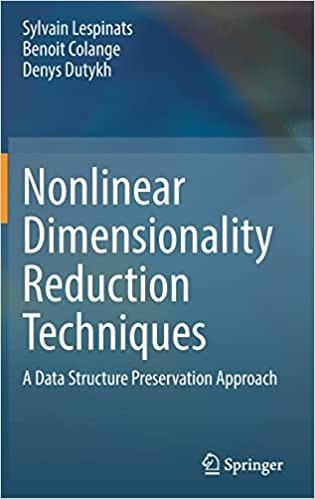Description
Nonlinear Dimensionality Reduction Techniques: A Data Structure Preservation Approach
"Nonlinear Dimensionality Reduction Techniques: A Data Structure Preservation Approach" takes center stage as a pioneering exploration into the intricate realm of data analysis, presenting a comprehensive overview of advanced techniques in nonlinear dimensionality reduction. Authored with a keen focus on preserving the inherent structure of complex datasets, this book unravels the intricacies of nonlinear methods essential for navigating the challenges posed by high-dimensional data. As the era of big data continues to redefine the landscape of information processing, this book emerges as an invaluable resource for researchers, data scientists, and analysts seeking to extract meaningful insights from intricate datasets while preserving their underlying structures.
The narrative unfolds as a journey through the theoretical foundations and practical applications of nonlinear dimensionality reduction. The book systematically demystifies complex mathematical concepts, providing readers with a clear understanding of the underlying principles. From manifold learning to kernel-based methods, the text navigates through a spectrum of nonlinear techniques designed to reveal the latent structures within high-dimensional datasets. The focus on preserving data structures sets this book apart, offering a holistic approach that goes beyond traditional dimensionality reduction methods.
At the core of this book is the emphasis on a data structure preservation approach. Rather than merely reducing dimensionality for the sake of computational efficiency, the techniques explored in this book prioritize the retention of essential data characteristics. This unique perspective ensures that the reduced-dimensional representations maintain the critical features of the original data, facilitating more meaningful and interpretable analyses. Practical applications, including real-world case studies, illuminate the relevance of these techniques in solving complex problems across various domains, from image processing to biological data analysis.
To cater to diverse reader preferences and ensure a dynamic visual experience, the book is being meticulously prepared with a combination of color matte finished and black-and-white materials. This deliberate design choice adds vibrancy to visual elements such as graphs, charts, and illustrations, enhancing the overall presentation of complex concepts. Simultaneously, the availability of black-and-white versions acknowledges the importance of accessibility, providing flexibility for readers who prefer a more traditional or cost-effective reading experience without compromising on the clarity and depth of the content.
In conclusion, "Nonlinear Dimensionality Reduction Techniques: A Data Structure Preservation Approach" emerges not only as a guide to advanced methods in data analysis but also as a manifesto for preserving the integrity of data structures in the face of high-dimensional complexity. With a meticulous blend of theory and practical applications, this book equips readers with the tools to unravel the hidden patterns within intricate datasets. Whether engaged in cutting-edge research or practical applications, readers will find in this book a valuable companion that demystifies nonlinear dimensionality reduction and empowers them to harness the full potential of high-dimensional data while preserving its intrinsic structures.






Reviews
There are no reviews yet.